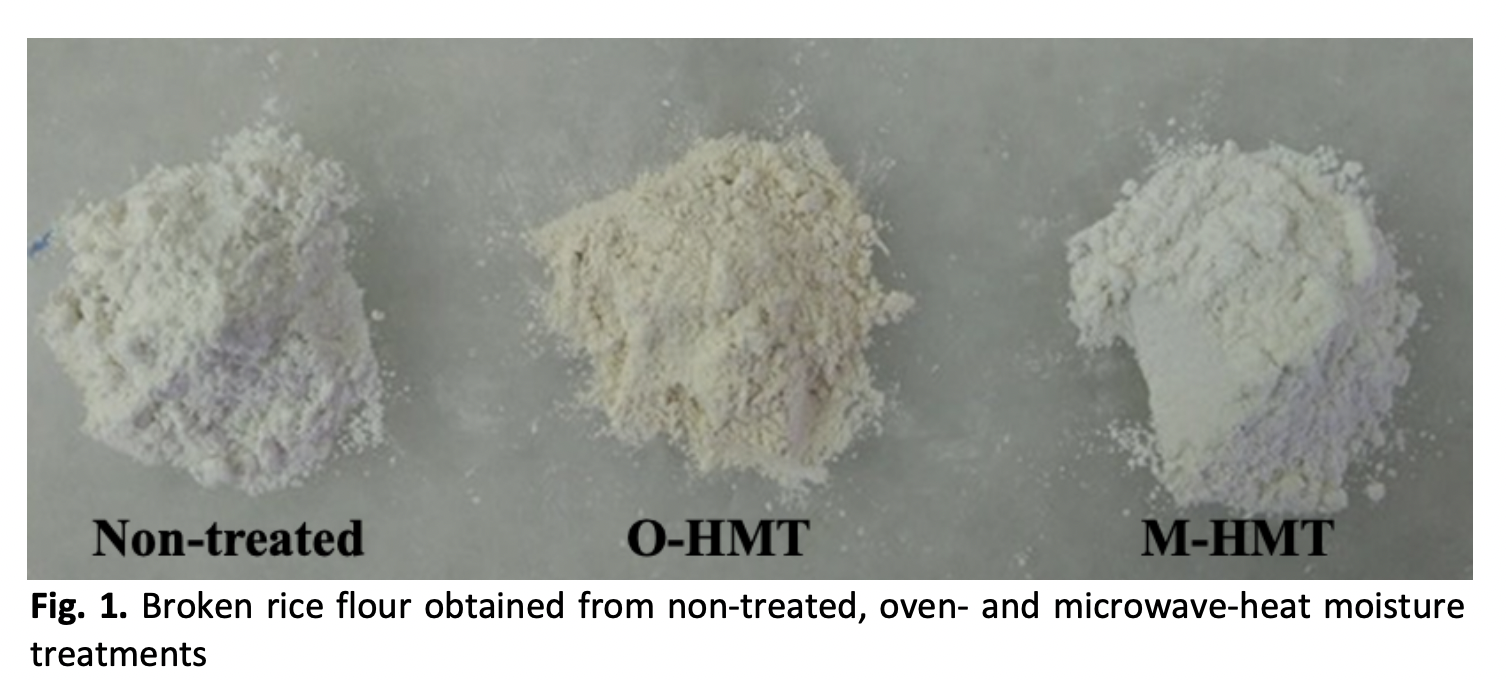Microwave- and Oven-Heat Moisture Treatment of Broken Rice Flour and the Improvement in Flat Rice Noodle Quality
DOI:
https://doi.org/10.37934/araset.43.1.3344Keywords:
rice starch, hydrotherma treatment, whiteness index, water absorption, cooking lossAbstract
The characteristics of starch used in the production of rice noodles greatly influenced the product quality. Some rice noodle varieties are made from rice flour, which is typically derived from broken rice grains. Broken rice flour has been associated with a higher level of starch damage that could adversely affect the cooking, textural, and eating qualities of noodles. Hydrothermal treatments have been proposed as a technique for improving starch functionality. This study aims to investigate the effect of different techniques employed in heat moisture treatment (HMT) applied to broken rice (MR263) and their impact on flat rice noodle quality. Rice flour adjusted to 20% moisture content was subjected to two HMT techniques; oven-heat moisture treatment (O-HMT) at 110°C for 3 h and microwave-heat moisture treatment (M-HMT) at 119 W for 5 min. HMT reduced the swelling capacity and solubility of the flour. M-HMT flour had the lowest swelling capacity, whereas O-HMT flour exhibited the lowest solubility. The oven-HMT reduced the L* and whiteness index values of both rice flour and noodles, whereas the microwave-HMT recorded comparable color parameters as the non-treated samples. HMT improved the cooking quality of flat rice noodles, resulting in lower water absorption and cooking loss. Noodles made with oven-treated flour had the lowest cooking loss, whereas the microwave-treated flour resulted in noodles with the lowest water absorption. O-HMT produces noodles with greater improvement in gel texture. Despite the reduced whiteness of the O-HMT noodle, it received higher consumer acceptance in terms of appearance, color, flavor, and hardness. Heat moisture treatment can be used as an economical viable technique for enhancing the quality of flat rice noodles. The varying noodle quality resulting from both oven- and microwave-HMT is attributed to a distinct degree of molecular changes in the starch components, which eventually impact the overall product quality.
Downloads





























